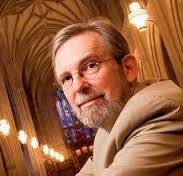3) What exactly do you mean by figural (or even metaphorical) reading of the OT? How would this differ from say an allegorical reading of the OT or a typological reading of the OT (ala Melchizedek and Christ in Hebrews)?
***See pp. 1-4, 104-05 for definition and discussion of figural reading. Erich Auerbach’s classic treatment of figural reading proposes that “the two poles of a figure are separated in time, but both, being real events or persons, are within temporality.” This is very close to what is usually meant by “typological reading.” But it differs from allegory (or perhaps is a very specific subspecies of allegory), because allegory often creates intertextual correspondences that are not rooted in the stream of temporality. It is important to realize that when Auerbach speaks of “real events or persons,” he doesn’t necessarily mean that these events or persons are historically factual in the sense that they are verifiable by modern historical methods. Your example of Melchizedek illustrates this point nicely.
4) How does figural interpretation (which does focus on the reception and use of the OT by the NT writers) differ from modern homiletical use of the OT by preachers and others? And if it is like that homiletical usage, does it even fall under the heading of some kind of exegesis, or is it rather a kind of hermeneutical use of the text without dealing with its original contextual meaning?
***It would of course depend on what kind of homiletical usage you are talking about. We would have to consider this on a case-by-case basis. But the best homiletical usage of the OT would attend both to original contextual meaning and to possible figural sense.
5) Since this is a book about the four Gospels, it is fair to ask why you came to the decision to reject the Q hypothesis, and instead assume that Luke used Matthew? Was this mainly because of the minor agreements of Mt. and Lk. against Mark, or was there some other main reason? I ask because it’s hard to understand Luke’s rationale for breaking up the Sermon on the Mount and using it like sprinkles on a series of different cupcakes, in various places in his Gospel.
***Here I would simply refer readers to a book by my colleague Mark Goodacre, The Case Against Q: Studies in Markan Priority and the Synoptic Problem. The minor agreements are weightier than sometimes recognized. It also has to be stressed repeatedly that Q is a modern hypothesis; there is no extant text of such a document, and no reference to it by any writer of antiquity. We may not be able to see entirely why Luke would have used Matthew in the way he did, but Goodacre offers some helpful proposals about Luke’s compositional purposes. (I would also note, however, that Reading Backwards is not meant as a contribution to the solution of the Synoptic Problem, and that I spend very little time discussing these issues.)













